From a core area in Almeria and Murcia the Agarian society expanded in Andalucia, Murcia and Alicante
By Nick Nutter | Updated 11 Apr 2023 | Andalucia | History |
Login to add to YOUR Favourites or Read Later
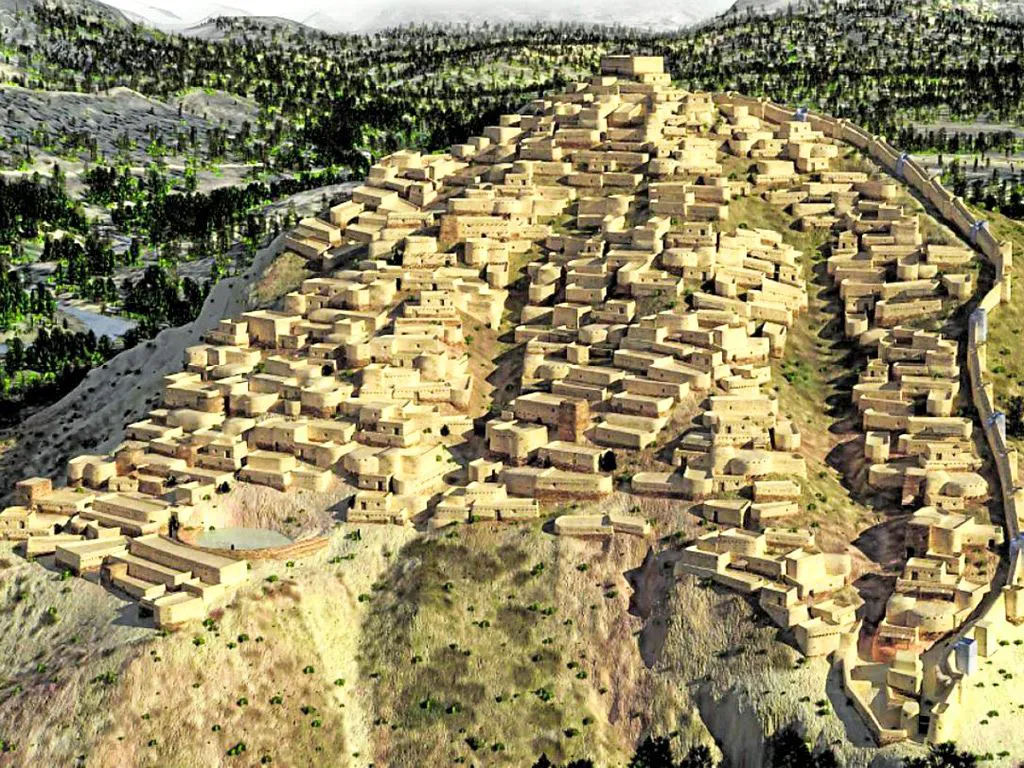
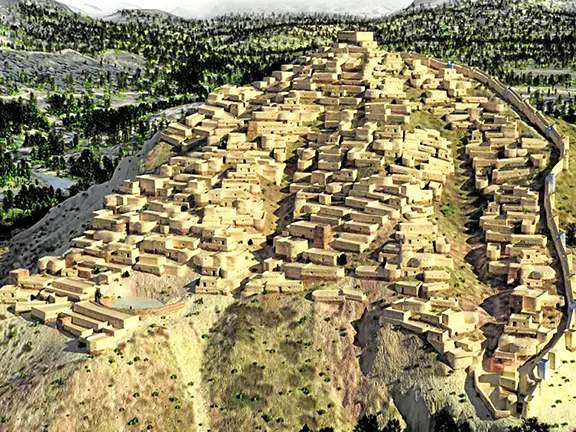
La Bastida (reconstruction), Murcia
The Argarian society first appears in the archaeological record about 2200 BC. The earliest signs of their presence are in Murcia where they established themselves in a thin strip of land, about 30 kilometres deep, that extended from the coast just west of present day Cartagena, 30 kilometres inland to the municipality of Pliego and then south west about 70 kilometres to the Mojacar municipality in Almeria and inland to somewhere near Arboleas. This became their core area.
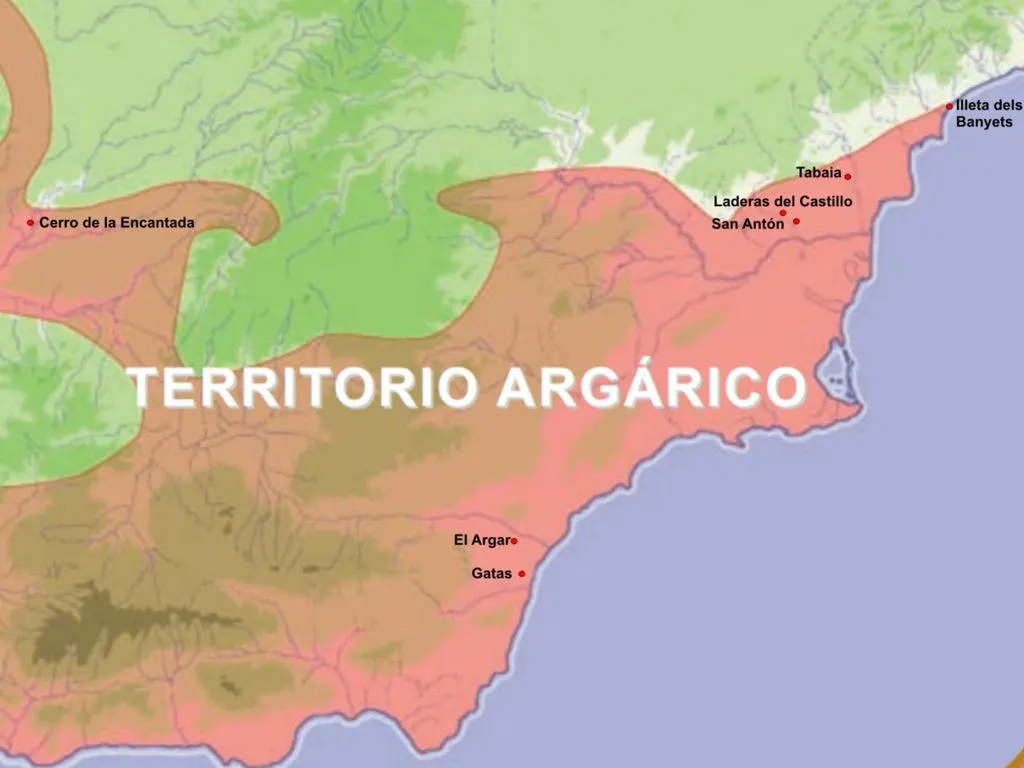
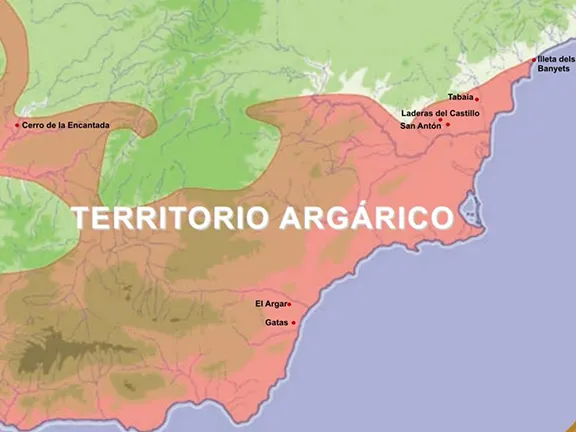
Maximum extent of Argarian territory
In the period between 2200 and 2000 BC the Argarians established centres at La Bastida (possibly the capital or most important settlement), La Almoloya, Lorca and Punta de los Gavilanes in Murcia and El Argar (the first settlement to be excavated so giving its name to the society), Fuente Álamo, and Gatas in Almeria. It is worth looking at some of these settlements since they illustrate definite differences between what went before and the Argarian. We shall do so in a later article.
The massive question about La Bastida is, where did the knowledge to build the sophisticated fortifications come from? There had been nothing like them before anywhere in the Iberian Peninsula and they appeared fully formed with no intermediate stages. There is no evidence to suggest an eastern Mediterranean influence, although this has been used as a justification in that particular argument. Clearly more research is required.
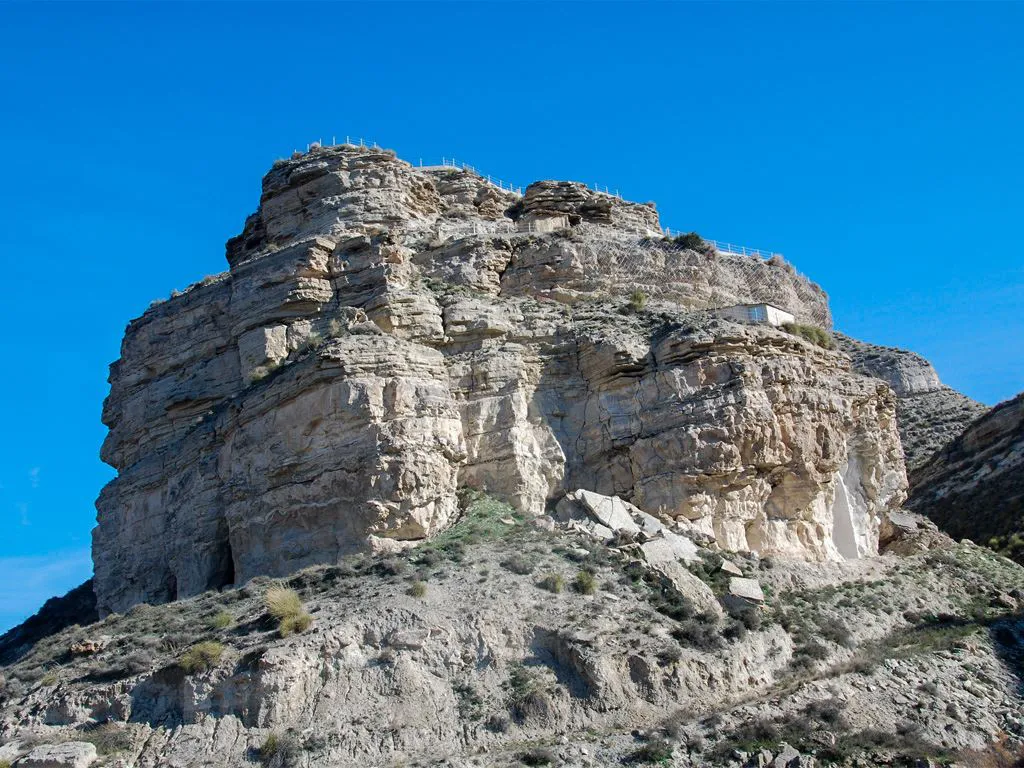
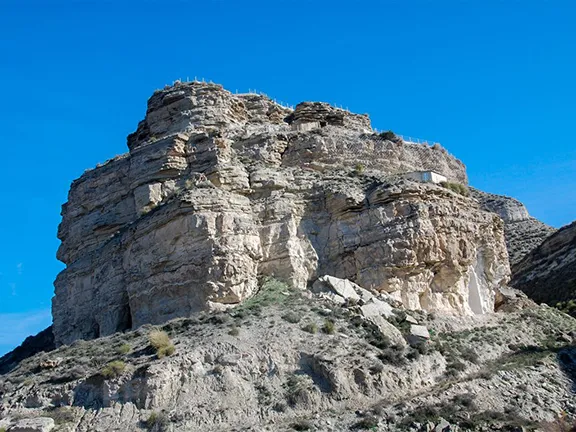
Castellon Alto, Galera, Granada province
During the second period, 2000 to 1750 BC, further settlements were established.
In the present day province of Almeria:
Fuente Vermeja (3 kms north of El Argar), Lugarico Viejo, near Fuente Vermeja, El Oficio (9 kilometres north of Villaricos), Cerro de Enmedio, El Picacho and Almizaraque (formerly occupied during the Los Millares period).
In the present day province of Granada:
Cerro de Virgen de Orce, Cerro de la Encina (near Monachil), Castellón Alto (near Galera) and Cuesta del Negro (Purullena)
In the present day province of Jaen:
Peñalosa (Baños de la Encina)
In the present day province of Cuidad Real:
Cerro de la Encantada
In the present day province of Alicante:
Puntarrón Chico (near Beniaján), Ilfre, Zapata (4 kilometres west of Ilfre), Cerro de las Víboras (Bajil).
In the present day province of Murcia:
Los Cipreses, Murviedro and Cerro de las Viñas (the latter three, near Lorca), and Illeta dels Banyets, Cabezo Pardo, Barranco de la Viuda and Cabezo Redondo (near Villena).
The settlements in Jaen and Cuidad Real are in the copper and silver rich areas in the Sierra Morena mountains.
The Argar people controlled an area that, at its greatest extent occupied the whole of the south-eastern Iberian Peninsula from Granada in the west to Alicante in the east and from Almeria on the coast to Cuidad Real inland.
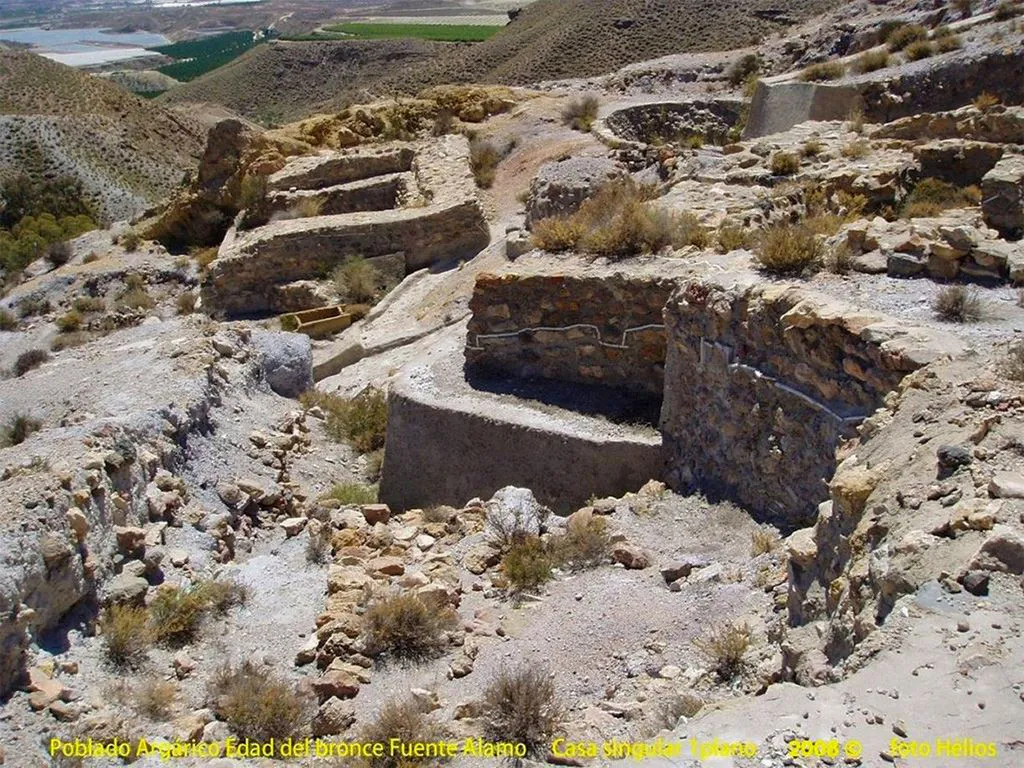
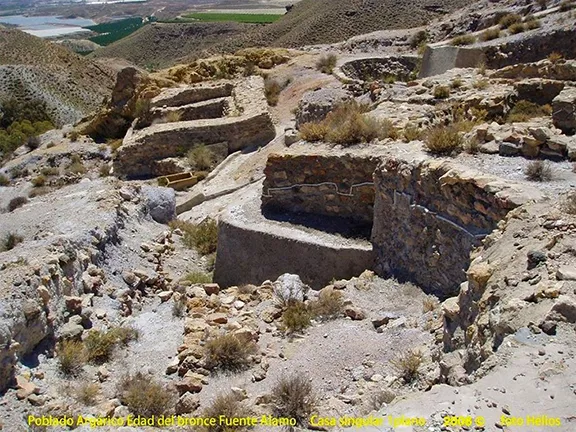
Fuente Alamo, Cuevas de Almanzora, Almeria province
Argaric hilltop settlements are characterised by a fortified summit, sometimes called an acropolis. Studies indicate that these were built in the last two hundred years of the society, between about 1750 and 1550 BC.
Typically, tower like structures with walls up to 2.3 metres thick dominated the summit of settlements such as Cerro de la Encina and Castellón Alto (Granada), Fuente Álamo (Almería) and Cerro de las Víboras (Bajil, Murcia).
Apart from the obvious function of defending the upper echelons of the society, the acropolis had other functions. Cereal storage jars were placed in rows in a room attached to the bastion at Cerro de la Encina. The bastion itself contained large quantities of faunal remains, animal bones. At Fuente Álamo, sixteen grinding slabs were found within and just outside the tower indicating cereal processing on an almost industrial scale. The same tower also had considerable quantities, about 80% of the total found on the site, of the peculiar chalice shaped vessels associated with domestic use, particularly in the funeral context of richer Argaric burials. Some of the late Argaric hill settlements, such as that at Castellón Alto also have large cisterns excavated into the bedrock to allow for the storage and control of a vital resource, water. The hydraulic construction at La Bastida is different to any other in that a dam some 20 metres long, over 4 metres wide and 1.7 metres high was built of stone and daub across a natural depression to hold a calculated 360 cubic metres of water.
Recently a 1000 square metre architectural complex has been discovered on a hill near La Bastida. Called Tira del Lienzo, the complex may have functioned as a fortified administrative outpost of La Bastida. Tentatively identified, not yet reported, is a silver sheeting workshop, some narrow storage rooms and specialised activity areas surrounding a central building.
These finds have led to the acropolis being described as central granaries, centralised places for grain processing and places of banqueting for a few privileged members of the population.
Late Argaric dwellings, whilst not absolutely uniform, tended to be rectangular, up to 13 metres long and 6.5 metres wide. They often contained large quantities of macro-lithic tools used for a wide variety of activities. It is not unusual to find up to a dozen grinding slabs beside one another on a bench, or a number of looms or sets of bone working tools. They give all the signs of having been specialised workshops, as well as living spaces, the first cottage industries.
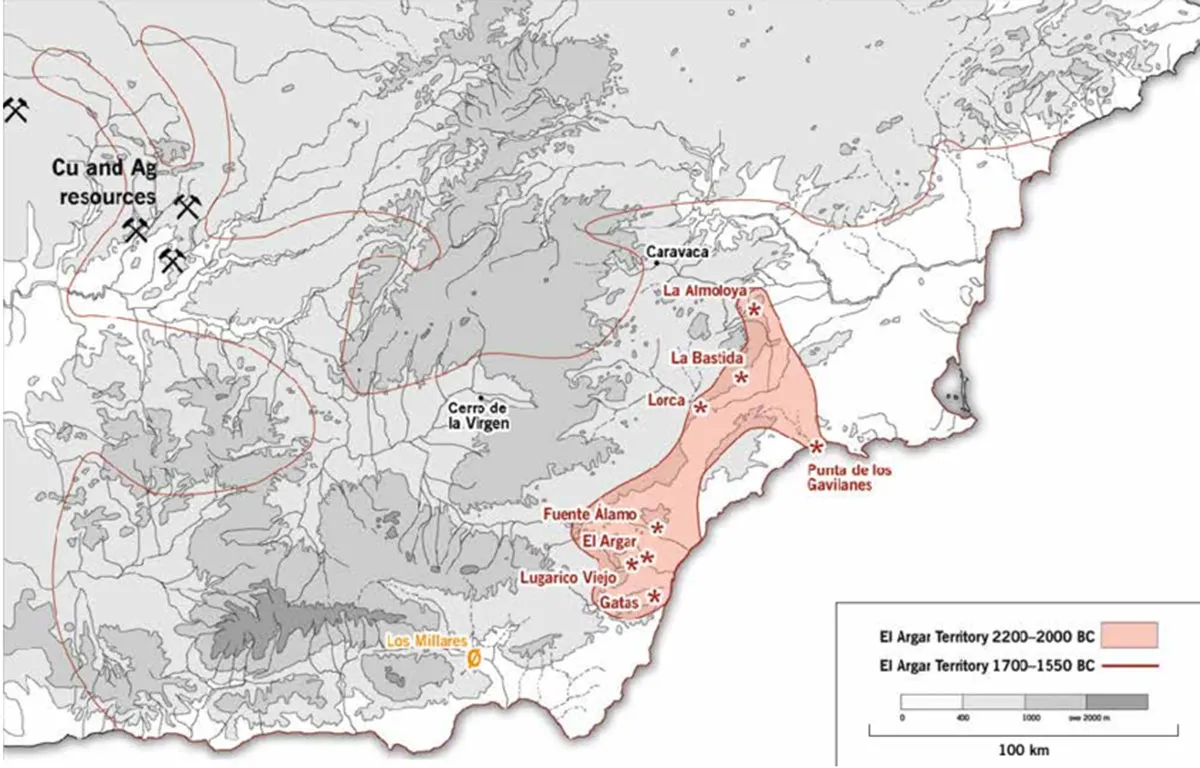
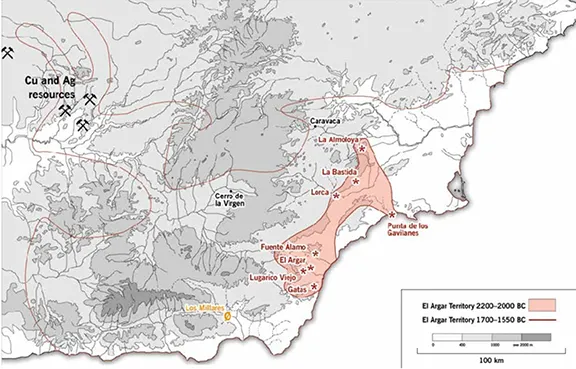
Argarian core area
References and further reading
Caramé, Manuel & Díaz-Zorita Bonilla, Marta & Sanjuán, Leonardo & Wheatley, David. (2010). The Copper Age Settlement of Valencina de la Concepción (Seville, Spain): Demography, Metallurgy and Spatial Organization. Trabajos de Prehistoria. 67. 10.3989/tp.2010.10032.
Díaz, María & Ramos, Ruth. (2018). La cosecha de El Garcel (Antas, Almería): estructuras de almacenamiento en el sureste de la península ibérica. Trabajos de Prehistoria. 75. 67. 10.3989/tp.2018.12204.
Hinz, Martin & Schirrmacher, Julien & Kneisel, Jutta & Rinne, Christoph & Weinelt, Mara. (2019). The Chalcolithic–Bronze Age transition in southern Iberia under the influence of the 4.2 ka BP event? A correlation of climatological and demographic proxies. 10.12766/jna.2019.1.
Lull, Vicente & Rihuete, Cristina & Micó, Rafael & Risch, Roberto. (2013). Political collapse and social change at the end of El Argar.
Murillo-Barroso, Mercedes & Bartelheim, Martin & Cortés, Francisco & Onorato, Auxilio & Pernicka, Ernst. (2012). The silver of the South Iberian El Argar Culture: A first look at production and distribution. Trabajos de Prehistoria. 69. 293-309. 10.3989/tp.2012.12093.
Olalde, Iñigo & Brace, Selina & Allentoft, Morten & Armit, Ian & Kristiansen, Kristian & Rohland, Nadin & Mallick, Swapan & Booth, Thomas & Szécsényi-Nagy, Anna & Mittnik, Alissa & Altena, Eveline & Lipson, Mark & Lazaridis, Iosif & Patterson, Nick & Broomandkhoshbacht, Nasreen & Diekmann, Yoan & Faltyskova, Zuzana & Fernandes, Daniel & Ferry, Matthew & Reich, David. (2017). The Beaker phenomenon and the genomic transformation of Northwest Europe. bioRxiv.
Risch, Roberto. (2014). The La Bastida fortification: new light and new questions on Early Bronze Age societies in the western Mediterranean. Antiquity. 88. 395-410. 10.13140/2.1.2131.0082.
Risch, Roberto & Lull, Vicente & Micó, Rafael & Rihuete, Cristina. (2015). Transitions and conflict at the end of the 3rd millennium BC in south Iberia. 10.13140/RG.2.1.3881.1286.
MUSEO DE GALERA. Guía Oficial Septiembre de 2007